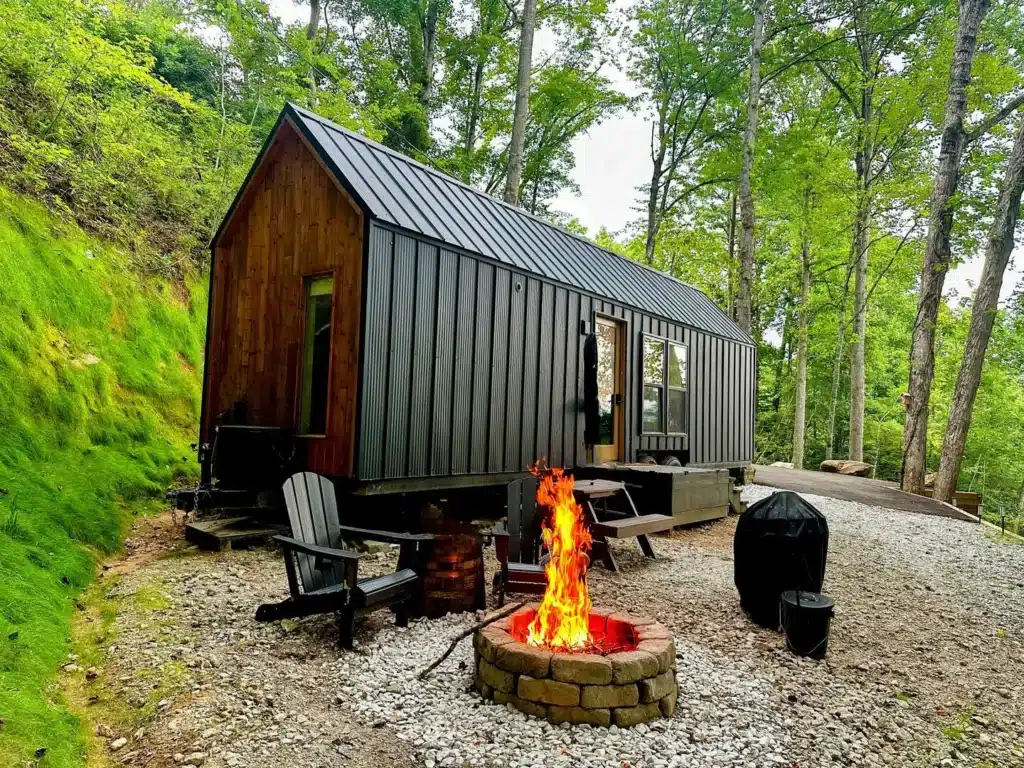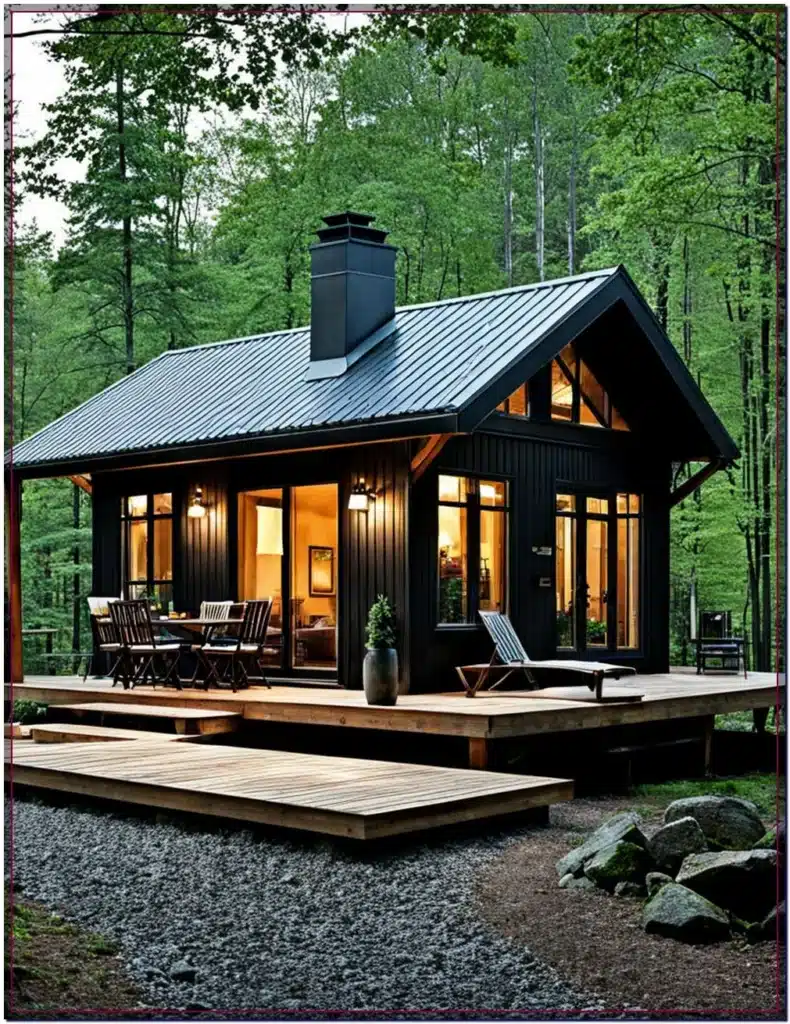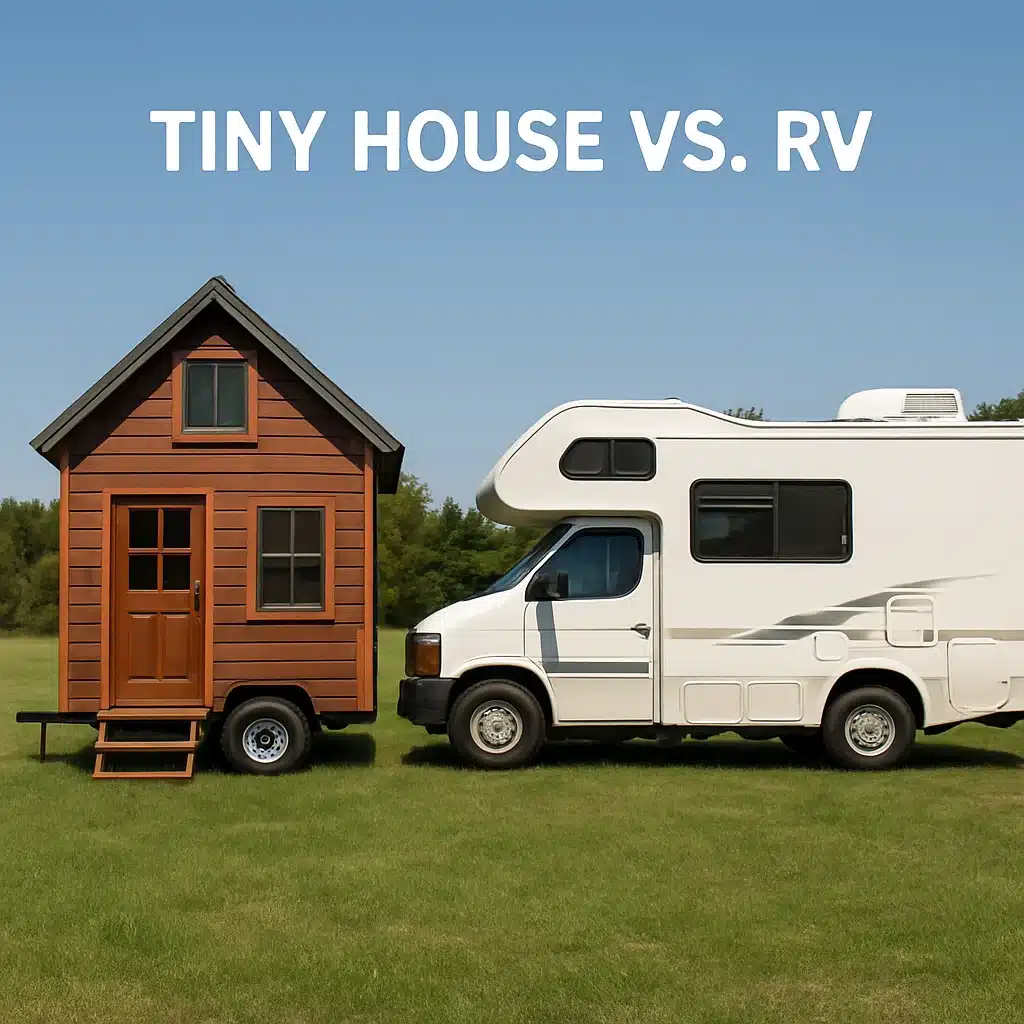Choosing between a traditional tiny house, a rustic log cabin, or a tiny house on wheels means thinking about design, mobility, cost, and your lifestyle. Each option matches different tastes, from wanting a permanent cozy place to craving flexibility and minimal living.
Tiny House
A tiny house usually means a small, custom-built home that’s about 100 to 400 square feet and set on a permanent foundation. These homes make the most of every inch, with smart features like built-in furniture, loft beds, and things that have multiple uses. Because builders construct these dwellings like regular houses, you must comply with local building regulations and obtain permits for plumbing, electricity, and similar work. Securing these permits may increase costs and extend construction time; however, it also enhances stability and can simplify financing through conventional mortgages or home equity loans.
Log Cabin
If you like something old-fashioned and charming, a log cabin may be just what you need. Made from logs, milled or hand-carved, these cabins range from simple off-grid retreats to fully modernized homes with all conveniences of the present day. Even smaller log cabins seem bigger on account of their towering ceilings and open-floor layout. Like tiny houses, log cabins are usually built on permanent foundations, meaning you’ll deal with typic
building inspections and approvals. They might cost more upfront because quality wood and skilled construction add up. But once built, log cabins are durable, naturally insulated, and hold their charm over time—especially appealing if you’re looking at resale value in rural or wooded areas.
Tiny House on Wheels
A tiny house on wheels (THOW) fuses tiny-house simplicity with mobility. Built onto the trailer frame, these homes are approximately 8.5 feet wide and 13.5 feet tall, rendering them road legal without any special permits. Internally, they’re much like stationary tiny homes, kitchens, bathrooms, living spaces, and sleeping lofts, but they are designed according to road-safe standards. Because they’re technically RVs, they bypass many of the tricky permitting rules tied to permanent homes, often making them quicker and cheaper to build. The downside? You can’t use typical home loans to finance them, so most people use personal loans, RV financing, or pay cash. Their main benefit is mobility—you can move around seasonally, explore new places, or avoid tough zoning laws without selling your home.
In short, if you want something permanent with straightforward financing, a stationary tiny house or log cabin might suit you best. Tiny houses offer smart, efficient living in a very small space, while log cabins deliver traditional comfort and more room to breathe. But if you prefer flexibility and the idea of taking your home wherever you go, a tiny house on wheels could be exactly what you’re looking for.










